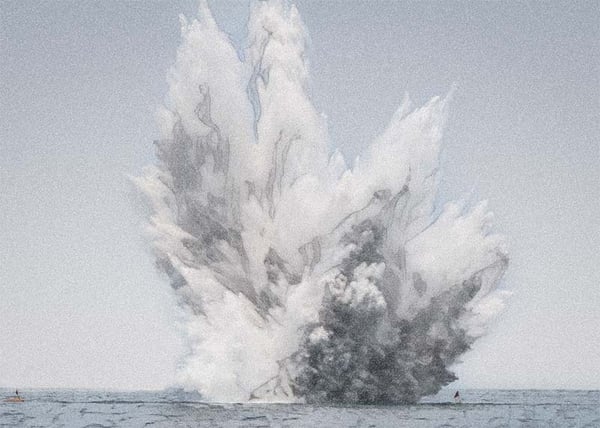Underwater minesweeping
This week, some 50 soldiers dived deep into the Baltic Sea in an annual NATO military diver training in Liepāja, west Latvia. The divers, from the Baltics, the US, and Germany, were tasked with neutralising unexploded ordnance at the bottom of the Baltic Sea. Over 100 objects were found and neutralised in the first few days, with the total number yet to be reported.
Over 80,000 mines are left at the bottom of the Baltic Sea from the two world wars. Every year since 1998, the Baltic countries have organised international operations to clear the seabed of dangerous underwater objects. Experts say there is enough work to be done for several more decades.
Although it's a good challenge for NATO countries to test their divers in the opaque waters of the Baltic Sea, technological developments are more efficient. Underwater robots and submersibles combined with years of experience have led to more efficient sweeping of the seabed. Last year, Latvia neutralised over 2,600 explosives.
According to the Latvian military, there are over 30,000 mines still to be cleared in the Latvian part of the Baltic Sea. Last year, the Polish military reported that some 60,000 explosives still lay under water.
The invisible underwater menace was left behind by the Soviets and Nazis who targeted the Baltic ports. At the end of the Second World War, the Allies decided to dump 300,000 tonnes of munitions in the sea, which at the time seemed the safest and most accessible disposal site.
Leaving these 70-year-old witnesses to history at the bottom of the world's already most polluted sea range is dangerous. They cause cancer in fish and mammals, as some contain chemicals, and endanger fishermen and civilian boats passing by. The hotspots of the military operations today are around the ports, which were the main targets during wars.

